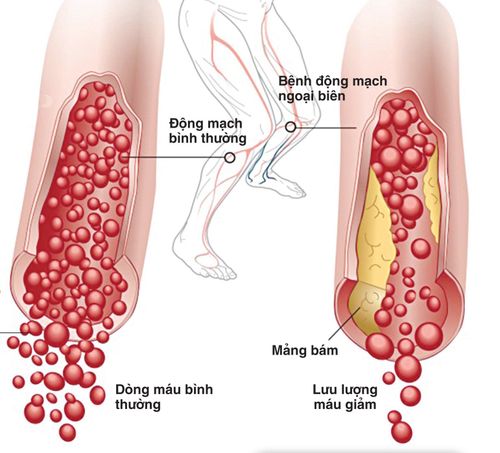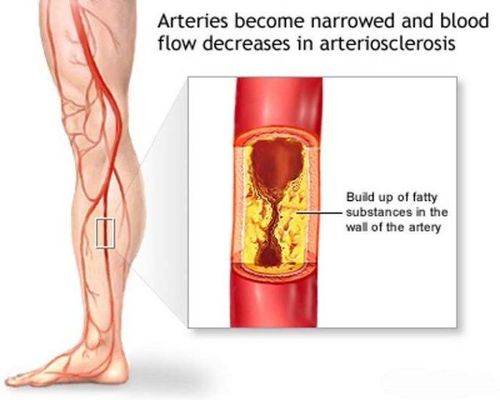This is an automatically translated article.
Re-surgery in peripheral vascular disease is a method of treating patients who have had previous surgery for peripheral vascular disease, now appear abnormal signs of ischemic-related disease, bleed...
1. Peripheral vascular disease
In vascular diseases, peripheral vascular disease is a disease that occurs when the body has abnormal signs or damage to the blood vessels in the periphery, which can be arteries or veins, occurring in the extremities. upper or lower extremities. Below are some common peripheral vascular disorders in humans:
Varicose veins of the lower extremities This is a condition in which the veins of the lower extremities are dilated, cannot return to normal, and often have a cause is caused by coronary artery disease or damage to the venous valve system. The disease is more common in women than in men, 2-3 times more often. Clinically, varicose veins of the lower extremities occur in 3 stages which are compensated varices, proximal varices and decompensated varices. For the period of compensated varicose veins, the patient will have symptoms such as a feeling of heaviness, pressure and fatigue in the lower extremities if standing for too long, slight swelling of the lower extremities after working for a long time and lessening when resting. . In the near-decompensated stage, the above signs appear more clearly, accompanied by pain when walking, more swollen and purple lower extremities, especially the instep of the feet, symptoms of itchy skin and possibly superficial veins located under the skin dilated. When the patient is in the decompensated stage, the pain, swelling and cyanosis of the lower extremities are more severe, even at rest, nutritional disorders as well as inflammation, ulcers, fibrosis, bleeding ulcers...
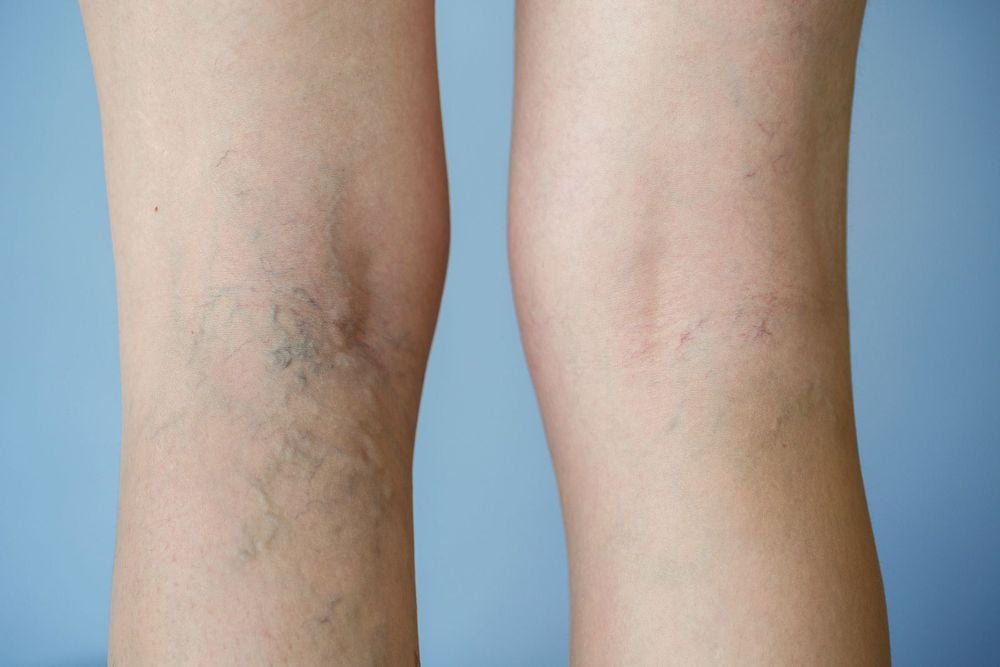
Tình trạng tĩnh mạch chi dưới bị giãn
Arteritis Occlusion Arteritis is a vascular disease associated with inflammation and constriction of the endothelium of the arteries, accompanied by symptoms of nutritional disorders and necrosis of organs due to acute arterial injury. nourishing blood. Arteritis is more common in men than in women, especially in the lower extremities of men.
When the artery is blocked, the patient's pulse will be very weak or absent, even if the blood vessels are too small, they will not be caught. Some paraclinical tests will show signs of suspected arterial occlusive disease such as capillary endoscopy with changes in capillary circulation, measurement of blood vessel oscillations to investigate the state of blood vessel damage occurring. where, measuring the temperature of the patient's skin will see that in the affected limb, the temperature will be lower than the normal limb, contrast angiography to know what stage the disease is in, how dilated, electrical measurements Cardiogram ... Some typical symptoms of arteritis are claudication, claudication, weak or absent dorsal pulse, leg numbness, decreased foot temperature, limb pain even at rest. , dry skin, thick nails, purulent inflammation under the toenails, foot ulcers, possible gangrene...
2. Treatment of peripheral vascular disease
In the treatment of peripheral vascular disease, there are many methods for certain diseases, namely:
For varicose veins without complications, it can be conservatively treated with compression bandages, using sclerotherapy or cryotherapy, venous coagulation by electric current..., or vein ligation surgery and some other surgical methods. For varicose veins with ulcers, treatment can reduce venous pressure and prevent venous thrombosis. amputation and vascular grafting or amputation of the affected limb.
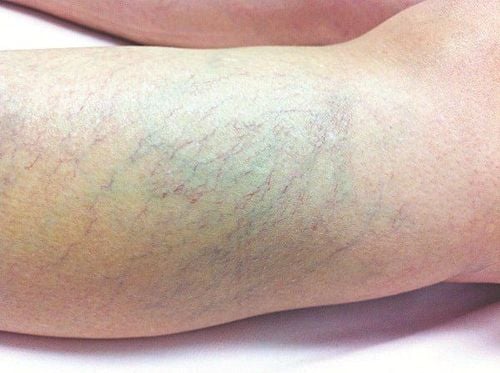
Tùy vào tình trạng suy giãn tĩnh mạch để có phương pháp điều trị phù hợp
3. Re-surgery in peripheral vascular disease
After surgery for peripheral vascular disease, some patients with acute limb ischemia, chronic limb ischemia or uncontrollable bleeding will be indicated for surgery. To prepare for re-surgery in peripheral vascular disease, it is necessary to prepare some issues as follows:
Explain and inform family and patients about the surgery to be performed on the patient. Do some check-up tests such as blood test, coagulation function test, blood type test, electrolyte test, urine 10 parameter test, liver and kidney function test, X-ray Straight chest radiograph ... Prepared with all necessary tools and equipment such as specialized tools for vascular surgery, Sonde Fogarty used to bring out blood clots in the lumen, Spatule for dissection of the endothelium blood vessels, artificial vessels... Steps to perform reoperation in vascular disease include:
Place the patient in a supine position, arms raised to a horizontal angle of 90° Anesthetize the patient with Intubation method Monitor blood pressure and electrocardiogram during surgery. Catheterize the patient. In case the lower extremity surgery is done quickly, spinal anesthesia can be applied to the patient, or if the upper limb surgery is anesthesia in the brachial plexus... Incision of the skin according to the old incision and If the axillary artery is exposed, make an incision in the midline outside the clavicle; if the brachial artery is exposed, the skin should be opened along the medial border of the triceps; if the common femoral artery is exposed, then the skin should be incised. Scarpa triangle... Assess the status of the old lesion, whether there is infection, bleeding, vascular blockage or not Give the patient a systemic anticoagulant Heparin at a dose of 50-100 I/kg If there is blood If there is bleeding, check and suture the wound. In the case of infection, it is necessary to perform ligation and bypass surgery outside the anatomical structure, possibly either autologous or artificial. If the patient has atherosclerotic occlusive disease, the vascular bridge remains at the back of the artery, the damaged gastric segment should be replaced with an artificial artery or saphenous vein. Drain and close the incision according to the anatomical sequence. .
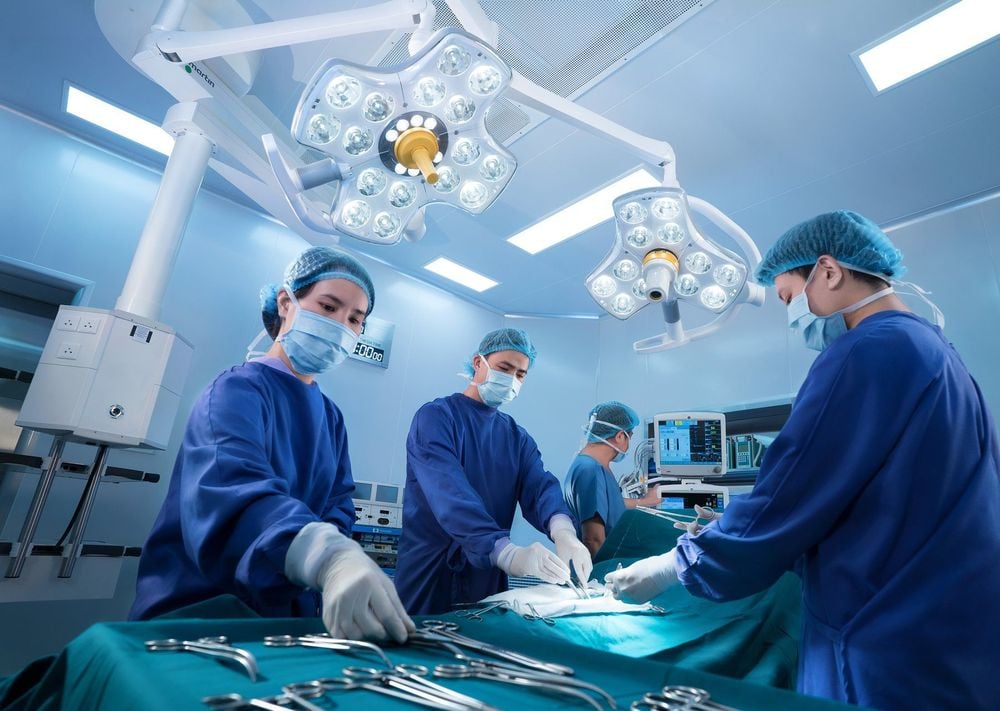
Quy trình phẫu thuật lại trong bệnh mạch máu
After surgery, it is necessary to monitor a number of symptoms and complications to promptly handle as follows:
Monitor vital signs Treat the patient with antibiotics to prevent infection. Transfusion of blood and blood substitutes if necessary, Anticoagulation given to the patient 6 to 8 hours after surgery to prevent bleeding If bleeding is profuse, consider reoperation If there are complications of occlusion After surgery, it is necessary to perform surgery again to remove blood clots, restore circulation and adjust anticoagulants appropriately, or can re-create a bridge. Silver-coated vessels and antibiotic therapy When patients have coagulation disorders, adjust anticoagulants. Re-surgery in peripheral vascular disease is a necessary indication in some peripheral vascular diseases of the upper extremities or lower extremities with signs of bleeding disorders, anemia... So after surgery, the patient's disease Peripheral blood vessels need to be monitored for early detection of complications such as lesions in order to have a timely re-operation indication.
Vinmec International General Hospital with a system of modern facilities, medical equipment and a team of experts and doctors with many years of experience in neurological examination and treatment, patients can completely peace of mind for examination and treatment at the Hospital.
To register for examination and treatment at Vinmec International General Hospital, you can contact Vinmec Health System nationwide, or register online HERE.
MORE
Phlebitis: What to know How is Peripheral Vascular Disease Diagnosed and Treated? Symptoms of peripheral vascular diseases







